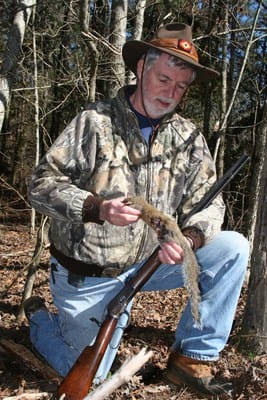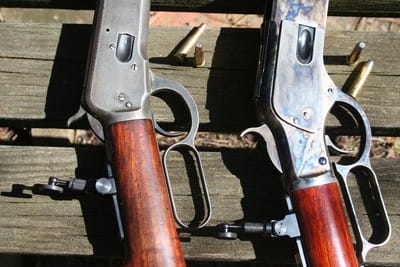
Mention the name Winchester and the mind is filled with images of the Old West, of cowboys and lever rifles. Or the picture of hunters clad in plaid wool and trekking the North Country of Maine or Vermont may be visualized. Both are accurate, and both speak of history and nostalgia and functionality. Rifles from Winchester have fed families and offered an additional measure of protection for generations.
While most hunters today toting a lever rig have the larger calibers and are out after game such as whitetails or black bear, there was a time when this was not necessarily so. Smaller rounds were common toward the end of the 19th Century, and at least a pair of these were developed for and chambered in Winchester rifles. These two specifically are the .25-20 Winchester (.25-20 WCF) and the .32-20 Winchester (.32-20 WCF). The .32-20 WCF was introduced in 1892 and was chambered in both the Model 73 and 92. Some discrepancy arises regarding when the .25-20 WCF was developed, but 1895 is a good bet. It is simply the .32-20 WCF necked down to .25-caliber and it fit the nifty little 92 perfectly.

Both rounds were advertised as combination rigs, good for game up to deer. And even though it is almost certain that both were used in that fashion, neither really suits the job well when the game is deer or bear tough. The two really shine, however, for small to medium game. And it is these critters—small game—that will receive the remainder of attention in this writing.
For many years now several of us who hunt together have used nothing but the more primitive firearms in our hunting. Flintlocks got the nod for squirrels, these rifles chambered in .32, .36, and.40. They work wonderfully well. But one of the guys owns a very fine 92 Winchester chambered to .32-20 and another has a 92 in .25-20. They tinkered around with some mild cast-bullet loads and began to take squirrels with monotonous regularity. This set a fire under those of us without such gear. But what to do? Antique rifles suitable for shooting are difficult to find and very expensive. Enter the Uberti replicas.
Uberti is well known for building excellent replicas of various firearms, among these the 73 Winchester. And that company chambers it to .32-20. The first 73 acquired by a member of our hunting clan was a beauty and the groups it turned out with cast bullets and a small charge of Unique powder were incredible. A nickel would cover the holes punched by five shots at 25 yards from a bench. As a result, other 73’s found their way into our group. One Saturday afternoon during this past squirrel season, the first season we all had small game getters from Winchester’s past, we gathered to pursue a Southern tradition, squirrel hunting with a dog. Adding to that tradition were the rifles: Original Winchesters and the Ubertis in those two superb calibers of .25-20 and .32-20. Friend Neal Brown’s mountain cur Barlow was along to take care of business.
Not far from the cabin in a hollow containing a stand of oaks, Barlow treed his first of the day. We moved about the tree searching for some sign, and I was first to spot it—a big fox squirrel tucked in hard against an arm-sized limb that formed a fork high up the oak. A step or two right put me near a sapling that afforded a solid rest. Peering through a Marble tang sight, this, too, pure tradition, I settled the front blade between the squirrel’s ears. The .32-caliber pill flew straight, and the squirrel plopped to the ground.

This scene was repeated many times throughout the afternoon. Fred, Neal, Sam—all of us took squirrels. The rifles and cartridges of the past were in their element and performed just as well as they did when they were new. Nothing was lost by stepping away from technology and back into the past, even if this journey of nostalgia lasted for only a few hours. In fact, much was gained. The rewards were simply too good to miss.
Contact:







